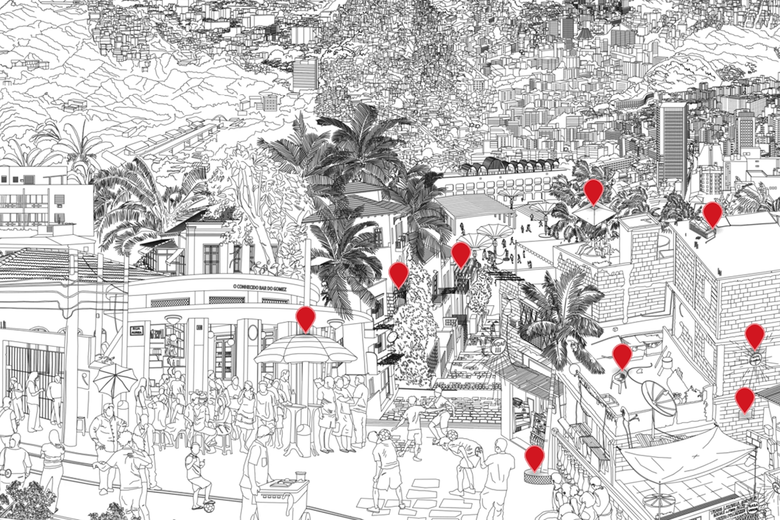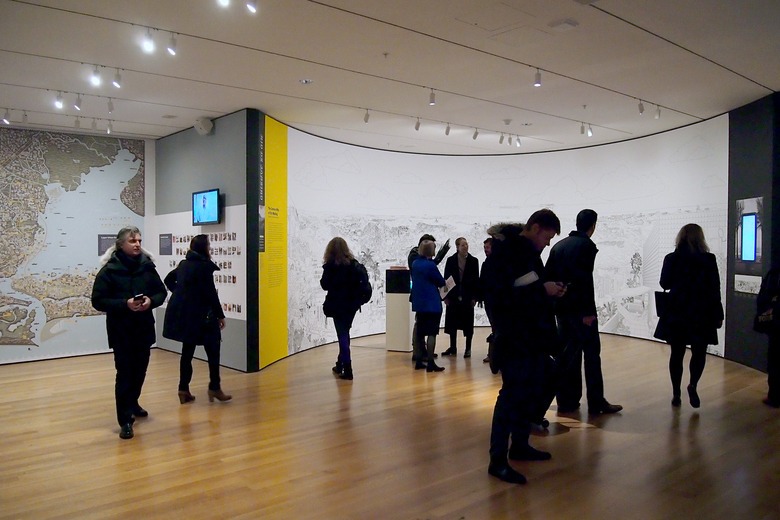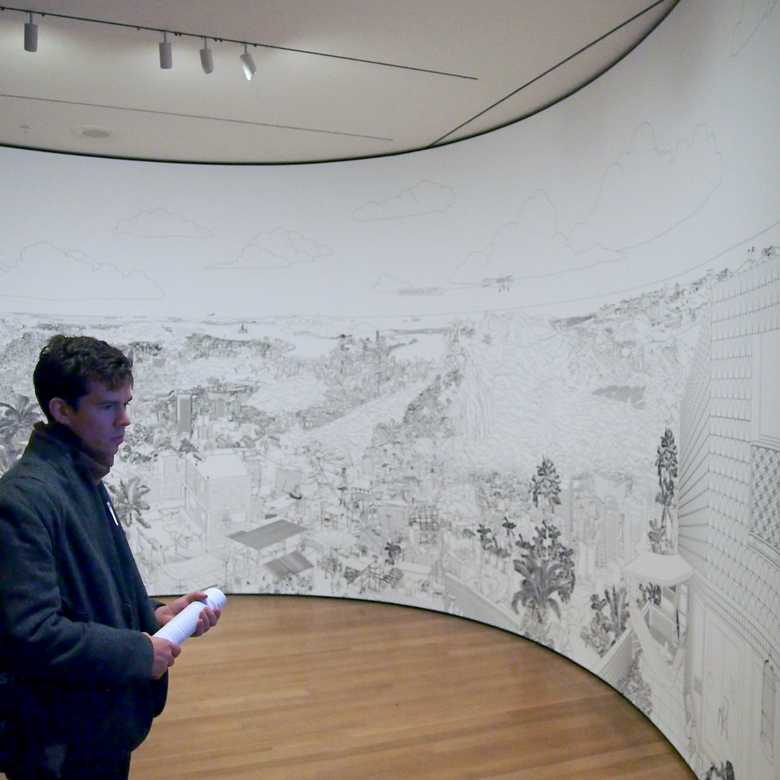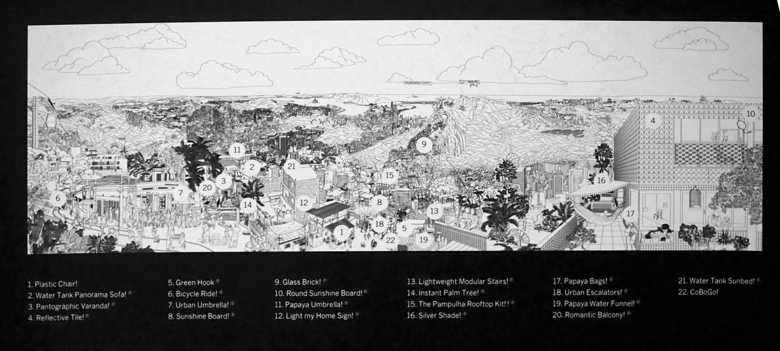Varanda Products
John Hill
19. November 2014
Photo: Screenshot from www.varandaproducts.com
MoMA's Uneven Growth: Tactical Urbanisms for Expanding Megacities opens to the public on 22 November 2014. One of the highlights from today's press preview is Varanda Products, RUA Arquitectos and MAS Urban Design ETH's proposal for Rio de Janeiro.
In line with the previous MoMA exhibitions Rising Currents (on climate change) and Foreclosed (on the financial collapse), Uneven Growth addresses a pressing concern, what MoMA curator Pedro Gadanho calls "the prevailing inequalities in specific urban areas and ... the changing role of architects vis-à-vis ever-increasing urbanization." Following the formula of the earlier exhibitions, Uneven Growth is the culmination of a 14-month initiative in which six interdisciplinary teams made up of local and international practitioners generated proposals for a particular metropolis: Hong Kong, Istanbul, Lagos, Mumbai, New York, and Rio de Janeiro. For Rio, the locals at RUA Arquitectos teamed up with MAS Urban Design ETH, Zurich, Switerland, to propose Varanda Products, what they describe as "a catalog of everyday consumer products that promotes city-making as a collective endeavor bringing together diverse social milieus."
The curving panorama stands out in the MoMA gallery devoted to the "Uneven Growth" exhibition. Photo: John Hill/World-Architects
One reason that the Rio team's contribution to the exhibition stands out is physical: its display has the only curved wall in the space, which is otherwise made up of straight walls that form room-sized alcoves for the other cities. The curved wall anchors one corner of the exhibition, drawing the visitor to the panorama that covers the wall and to the video components of their proposal.
A closer view of the panoramic drawing. Photo: John Hill/World-Architects
MoMA curator Pedro Gadanho speaking about the exhibition while standing in front of the "Varanda Products" panorama. Photo: John Hill/World-Architects
Below is a left-to-right pan of the panorama that I made during the preview, followed by a key of the different "products."
Panorama key. Photo: John Hill/World-Architects
For more information on team Rio's proposal visit the Varanda Products website, and for more information on Uneven Growth visit MoMA's special website for the exhibition.




